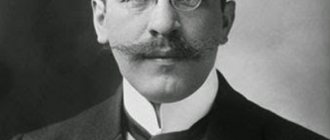Man and the characteristics of his personality have been the object of interest and study of the great minds of mankind for centuries. And from the very beginning of the development of psychological science to the present day, people have been able to develop and significantly improve their skills in this difficult but exciting matter. Therefore, now, in order to obtain reliable data in the study of the characteristics of the human psyche and his personality, people use a large number of different methods and methods of research in psychology. And one of the methods that has gained the greatest popularity and has proven itself from the most practical side is a psychological experiment.
We decided to consider individual examples of the most famous, interesting and even inhumane and shocking socio-psychological experiments that were carried out on people, regardless of the general material, due to their importance and significance. But at the beginning of this part of our course, we will once again remember what a psychological experiment is and what its features are, and we will also briefly touch on the types and characteristics of the experiment.
What is an experiment?
An experiment in psychology is a certain experiment that is carried out under special conditions in order to obtain psychological data through the intervention of a researcher in the process of the subject’s activity. Both a specialist scientist and a simple layman can act as a researcher during an experiment.
The main characteristics and features of the experiment are:
- The ability to change any variable and create new conditions to identify new patterns;
- Possibility to choose a starting point;
- Possibility of repeated implementation;
- The ability to include other methods of psychological research in the experiment: test, survey, observation and others.
The experiment itself can be of several types: laboratory, natural, pilot, explicit, hidden, etc.
If you have not studied the first lessons of our course, then you will probably be interested to know that you can learn more about experiments and other research methods in psychology in our lesson “Methods of Psychology.” Now we move on to consider the most famous psychological experiments.
The most famous psychological experiments
- Hawthorne experiment
- Milgram experiment
- Stanford prison experiment
- Ringelmann experiment
- Experiment “Me and Others”
- "Monstrous" experiment
- Project "Aversia"
- Landis experiments
- Little Albert
- Acquired (learned) helplessness
- Boy raised like a girl
1
Types of experimental research in psychology
All psychological studies are divided into several groups:
- Theoretical research.
- Empirical research.
- Applied research.
Theoretical studies can be and, in fact, are included in any research activity, since they are focused on collecting information about the object of research and developing its theoretical basis.
Empirical research is based on the perception of the surrounding world by the senses, real observation of the objects and processes being studied, as well as the creation of experimental conditions that exactly correspond to the mental process being studied. At the same time, the study combines various methods and techniques.
Applied psychological research is focused on solving a certain group of problems of psychological orientation, resolving problems that arise in various spheres of an individual’s life.
Each psychological study, regardless of its group affiliation, consists of a variety of experimental methods.
The following types are distinguished:
- A natural experiment is carrying out research work under real operating conditions of the test object. Such an experiment is carried out in various areas of human activity, making it possible to understand and evaluate the psychological factors of committing a particular act, to evaluate their dynamics and structure;
- A laboratory experiment is conducting research in unreal conditions of the existence of an object, and in artificial conditions as close as possible to them. The results of the experiment are subsequently applied and evaluated in the real world;
- Formative experiment - conducting research based on a combination of teaching methods, education, training, and psychological analysis. The methods used to implement this experiment include various trainings, role-playing and business games, and the construction of situational models. This method is of great importance in psychology, since it allows not only to obtain some data, but also creates conditions for the personal development of the objects of experimental activity.
The results of any psychological experiment require a mathematical justification. It creates positive conditions for an adequate interpretation of facts. In addition, this makes it possible to determine indicators that affect the object of research and its parameters, to identify patterns of development of a particular process, situation, object, and to find areas of the expected effect of experimental activity.
Hawthorne experiment
The name Hawthorne experiment refers to a series of socio-psychological experiments that were carried out from 1924 to 1932 in the American city of Hawthorne at the Western Electrics factory by a group of researchers led by psychologist Elton Mayo. The prerequisite for the experiment was a decrease in labor productivity among factory workers. Studies that have been conducted on this issue have not been able to explain the reasons for this decline. Because The factory management was interested in increasing productivity; the scientists were given complete freedom of action. Their goal was to identify the relationship between physical working conditions and worker performance.
After much research, scientists came to the conclusion that labor productivity is influenced by social conditions and, mainly, by the emergence of workers’ interest in the work process, as a consequence of their awareness of their participation in the experiment. The mere fact that workers are allocated to a separate group and special attention from scientists and managers is shown to them already affects the effectiveness of workers. By the way, during the Hawthorne experiment, the Hawthorne effect was discovered, and the experiment itself increased the authority of psychological research as scientific methods.
Knowing about the results of the Hawthorne experiment, as well as the effect, we can apply this knowledge in practice, namely, have a positive impact on our activities and the activities of other people. Parents can improve their children's development, teachers can improve student achievement, and employers can improve their employees' performance and productivity. To do this, you can try to announce that some kind of experiment will be taking place, and the people to whom you are announcing this are an important component of it. For the same purpose, you can apply the introduction of any innovations. But you can learn more about this here.
You can find out more about the Hawthorne Experiment here.
2
Principles and basis of experimental psychology
Experimental psychology is a general term for any type of scientific psychological research conducted using experimental methods. It does not lie in some special type of psychology, but in a general methodological approach that covers different areas of psychological science.
Experimental methodology within psychology can be reduced mainly to laboratory research (less often, to natural experiments). In the process of research in laboratory conditions, preliminary planning and organization of the most correct experiments are carried out, which relate to different areas of psychological science, including almost all areas of applied psychology.
An important role for success in the development of experimental psychology is played by the development of effective experimental methods for studying problems and issues that are related to the psychophysiology of perception, sensations, development, attention, consciousness, learning, memory, thinking, etc.
In modern science, experimental approaches have become actively used in social psychology and in the study of the psychological side of emotions and motivation.
The methodology of experimental psychology is based on several principles. First of all, these are general scientific methodological principles:
- determinism (human behavior and mental phenomena are a consequence of certain causes and have a fundamental explanation),
- objectivity (the object of knowledge must be independent of the knowing subject, while it must be fundamentally knowable through action),
- falsifiability (the presence of a methodological ability to refute a theory that claims to be scientific through setting up an experiment).
Psychology-specific principles include the following:
- The unity of the mental and physical (with the help of the nervous system the manifestation and course of mental processes is ensured, but reducing mental phenomena to physiological ones is not possible);
- The unity of activity and consciousness (consciousness is active, and activity is conscious, while an experimental psychologist studies behavior formed through the close interaction of personality and situation);
- The principle of development (genetic principle, the principle of historicism), according to which the psyche of the subject is the result of long-term development in phylogenesis and ontogenesis.
- A systemic-structural principle, which states that any mental phenomena must be considered as integral processes, and the impact is always carried out on the psyche as a whole, and not on its individual part.
Milgram experiment
The Milgram experiment was first described by an American social psychologist in 1963. His goal was to find out how much suffering some people can cause to others, and innocent people, provided that this is their job responsibilities. Participants in the experiment were told that the effect of pain on memory was being studied. And the participants were the experimenter himself, a real subject (“teacher”), and an actor who played the role of another subject (“student”). The “student” had to memorize words from the list, and the “teacher” had to test his memory and, in case of an error, punish him with an electric shock, each time increasing its strength.
Initially, the Milgram experiment was conducted to find out how the inhabitants of Germany could take part in the destruction of huge numbers of people during the Nazi terror. As a result, the experiment clearly demonstrated the inability of people (in this case, “teachers”) to resist a boss (researcher) who ordered the “work” to continue, despite the fact that the “student” was suffering. As a result of the experiment, it was revealed that the need to obey authorities is deeply rooted in the human mind, even under conditions of internal conflict and moral suffering. Milgram himself noted that under the pressure of authority, adequate adults are capable of going very far.
If we think about it for a while, we will see that, in fact, the results of Milgram's experiment tell us, among other things, about the inability of a person to independently decide what to do and how to behave when someone is “above him” higher in rank, status, etc. The manifestation of these features of the human psyche, unfortunately, very often leads to disastrous results. In order for our society to be called truly civilized, people must learn to always be guided by human attitudes towards each other, as well as by ethical standards and moral principles that their conscience dictates to them, and not the authority and power of other people.
You can read the details of Milgram's experiment here.
3
The Bobo Doll Experiment: A Behavioral Study
Canadian and American psychologist Albert Bandura (1925) with his colleagues Dorothea Ross and Sheila Ross in 1961 conducted a socio-psychological experiment on the characteristics of children's inheritance of behavioral aggressive actions of adults. A large Bobo toy was used to aid the experiment on 72 children aged 3-5 years. All children were shown in three different ways how an adult beats this same toy. The first group saw it live, the second group saw it on video, the third group saw it in the cartoon “Herman the Cat,” and the fourth group (control group) saw nothing. As a result, the subjects who observed aggressive behavior actually demonstrated aggressive behavior more often than subjects from other groups.
Stanford prison experiment
The Stanford Prison Experiment was conducted by American psychologist Philip Zimbardo in 1971 at Stanford. It examined a person’s reaction to the conditions of imprisonment, restriction of freedom and the influence of an imposed social role on his behavior. Funding was provided by the US Navy to explain the causes of conflict in the Marine Corps and Navy correctional facilities. Men were selected for the experiment, some of whom became “prisoners”, and the other part became “guards”.
The “guards” and “prisoners” very quickly got used to their roles, and sometimes very dangerous situations arose in the makeshift prison. A third of the “guards” showed sadistic tendencies, and the “prisoners” received severe moral trauma. The experiment, designed to last two weeks, was stopped after just six days, because... it started to get out of control. The Stanford prison experiment is often compared to the Milgram experiment described above.
In real life, you can see how any justifying ideology supported by the state and society can make people overly susceptible and submissive, and the power of authorities has a strong impact on the personality and psyche of a person. Observe yourself and you will see clear evidence of how certain conditions and situations influence your internal state and shape your behavior more strongly than the internal characteristics of your personality. It is very important to be able to always remain yourself and remember your values in order not to be influenced by external factors. And this can only be done with the help of constant self-control and awareness, which, in turn, require regular and systematic training.
Details of the Stanford Prison Experiment can be found by following this link.
4
J. Prater's experiment: the effectiveness of mental training
Psychologist J. Prater proved his hypothesis that skills develop and improve faster if you combine practical training with mental training. He studied this effectiveness of mental training on military academy cadets during training landings of a T-37 aircraft. 23 cadets took part in the study. All of them underwent standard training on simulators, and some of them collectively carried out mental training in a mock-up cabin. As a result, the results were obtained according to which the participants in the experimental group received higher scores in both knowledge and technique.
Ringelmann experiment
The Ringelmann experiment (also known as the Ringelmann effect) was first described in 1913 and conducted in 1927 by French professor of agricultural engineering Maximilian Ringelmann. This experiment was carried out out of curiosity, but revealed a pattern of reduction in people's productivity depending on the increase in the number of people in the group in which they work. For the experiment, a random selection of different numbers of people was carried out to perform a certain job. In the first case it was weight lifting, and in the second it was tug of war.
One person could lift a maximum weight of, for example, 50 kg. Therefore, two people should have been able to lift 100 kg, because the result should increase in direct proportion. But the effect was different: two people were able to lift only 93% of the weight that they could lift 100% of individually. When the group of people was increased to eight people, they only lifted 49% of the weight. In the case of tug of war, the effect was the same: increasing the number of people reduced the percentage of efficiency.
We can conclude that when we rely only on our own strengths, we make maximum efforts to achieve results, and when we work in a group, we often rely on someone else. The problem lies in the passivity of actions, and this passivity is more social than physical. Solitary work gives us the reflex to achieve the maximum from ourselves, but in group work the result is not so significant. Therefore, if you need to do something very important, then it is best to rely only on yourself and not count on the help of other people, because then you will give it your all and achieve your goal, and what is important to other people is not so important to you.
More information about the Ringelmann experiment/effect can be found here.
5
Research on cognitive dissonance by L. Festinger
American psychologist, specialist in the field of psychology of thought regulation, social psychology Leon Festinger (1919 – 1989) is the author of the theory of cognitive dissonance. Its essence is as follows: “logically contradictory knowledge about a subject has a motivational function and causes a desire to eliminate these inconsistencies by changing knowledge or social attitudes.” This is precisely what was officially proven in the example of a risky experiment conducted with a sect. It is described in the work of Elena Rumyantseva “Carol Tevris and Elliot Aronson “Mistakes that were made (but not by me).” [1]
Experiment “Me and Others”
“Me and Others” is a 1971 Soviet popular science film that features filming of several psychological experiments, the progress of which is commented on by a narrator. The experiments in the film reflect the influence of the opinions of others on a person and his ability to think out what he was unable to remember. All experiments were prepared and conducted by psychologist Valeria Mukhina.
Experiments shown in the film:
- “Assault”: subjects must describe the details of an impromptu attack and recall the characteristics of the attackers.
- “Scientist or killer”: subjects are shown a portrait of the same person, having previously imagined him as a scientist or a killer. Participants must create a psychological portrait of this person.
- “Both white”: black and white pyramids are placed on the table in front of the child participants. Three of the children say that both pyramids are white, testing the fourth for suggestibility. The results of the experiment are very interesting. Later, this experiment was carried out with the participation of adults.
- “Sweet salty porridge”: three quarters of the porridge in the plate is sweet, and one quarter is salty. Three children are given porridge and they say it is sweet. The fourth is given a salty “plot”. Task: check what a child who has tried the salty “plot” will name the porridge when the other three say it is sweet, thereby checking the importance of public opinion.
- “Portraits”: participants are shown 5 portraits and asked to find out if there are two photos of the same person among them. At the same time, all participants, except one who came later, must say that two different photos are photos of the same person. The essence of the experiment is also to find out how the opinion of the majority influences the opinion of one.
- “Shooting Range”: in front of the student there are two targets. If he shoots on the left, then a ruble will fall out, which he can take for himself, if on the right, then the ruble will go to the needs of the class. More hit marks were initially made on the left target. You need to find out which target the student will shoot at if he sees that many of his comrades were shooting at the left target.
The vast majority of the results from the experiments in the film showed that people (children and adults alike) care deeply about what others say and their opinions. It’s the same in life: very often we give up our beliefs and opinions when we see that the opinions of others do not coincide with our own. That is, we can say that we are losing ourselves among the others. For this reason, many people do not achieve their goals, betray their dreams, and follow the lead of the public. You need to be able to maintain your individuality in any conditions and always think only with your own head. After all, first of all, it will serve you well.
You can read about the film “Me and Others” in more detail, as well as watch the film itself on this page.
By the way, in 2010 a remake of this film was made, in which the same experiments were presented. If you wish, you can find both of these films online.
6
Experiments by G. Harlow (study of the nature of love)
American psychologist Harry Frederick Harlow (1906 – 1981) was the first to experimentally study love. Before his experiment, it was believed that a child's love for his mother consisted primarily of satisfying his needs, such as hunger, thirst and the desire to avoid pain. According to Harlow's hypothesis, love and emotional attachments are basic needs that have the same importance as biological needs.
To confirm the hypothesis, it was necessary to create conditions in which not one mother, but several, would satisfy the child’s needs. Due to the fact that such a situation is impossible for ethical reasons, Harlow began to conduct an experiment on rhesus monkeys. For the purity of the experiment, mothers had to be isolated. The cubs had a hard time experiencing the separation, but they found something warm and familiar in the terry towel placed under the cages. When separated from him, a negative reaction arose again.
Then 4 stages of the experiment were carried out and the following results were obtained:
- Given two surrogate mothers, all monkeys spent more time with the one that was soft and warm, rather than with the wire one, but with a food bottle.
- In an isolated concept, where both surrogate mothers (soft and wire) were provided with bottles of milk for feeding, subjects with the wire design suffered from digestive problems and were developmentally delayed.
- When a stressful situation was created with the help of a monster making loud sounds and making sudden movements, all the experimental subjects ran to the soft “mother”. Touching her calmed them down.
- When constructing "evil mothers" who pushed their babies away in different ways, they still attracted the little macaques to themselves.
This experiment brought great benefits to humanity, but at the same time caused irreparable damage to monkeys. Therefore, Harlow's experiments were criticized by the scientific community. Nadezhda Kozochkina also writes about this in her work “The Source of Despair – An Experiment on Monkeys Raised in Social Isolation” [4].
"Monstrous" experiment
A monstrous experiment in its essence was conducted in 1939 in the USA by psychologist Wendell Johnson and his graduate student Mary Tudor in order to find out how susceptible children are to suggestion. 22 orphans from the city of Davenport were selected for the experiment. They were divided into two groups. Children from the first group were told how wonderful and correct they spoke, and were praised in every possible way. The other half of the children were convinced that their speech was full of shortcomings, and they were called pathetic stutterers.
The results of this monstrous experiment were also monstrous: the majority of children from the second group, who did not have any speech defects, began to develop and take root all the symptoms of stuttering, which persisted throughout their entire lives. The experiment itself was hidden from the public for a very long time so as not to damage Dr. Johnson’s reputation. Then, nevertheless, people learned about this experiment. Later, by the way, similar experiments were carried out by the Nazis on concentration camp prisoners.
Looking at the life of modern society, you are sometimes amazed at how parents raise their children these days. You can often see how they scold their children, insult them, call them names, and call them very unpleasant names. It is not surprising that young children grow up to be people with broken psyches and developmental disabilities. We need to understand that everything that we say to our children, and especially if we say it often, will eventually be reflected in their inner world and the development of their personality. We need to carefully monitor everything we say to our children, how we communicate with them, what kind of self-esteem we form and what values we instill. Only healthy upbringing and true parental love can make our sons and daughters adequate people, ready for adulthood and capable of becoming part of a normal and healthy society.
More detailed information about the “monstrous” experiment is here.
7
Phenomenon B.V. Zeigarnik: remembering completed and incomplete actions
Soviet psychologist, founder of Soviet pathopsychology Bluma Vulfovna Zeigarnik (1901-1988), under the leadership of Kurt Lewin, conducted experiments at the University of Berlin with 164 people aged 13 to 65 years. The experiment was carried out individually with each participant. Each was offered a series of simple tasks with instructions for completion. These included: modeling an animal from plasticine, stringing beads, and punching holes in cardboard. But half of them were deliberately not allowed to be completed. It turned out that completed and unfinished tasks alternated randomly. After this, the participants filled out a report on the experimental work done, where they indicated their experiences, listed the tasks completed and evaluated them. An interesting point was that it was the unfinished tasks that were better remembered, since I wanted to return to them in order to complete them. This experiment is also indicated in the “Table of Psychological Effects” by Anna Aleksandrovna Bibikova [2].
Thus, it has been proven that unfinished actions are remembered better than completed ones. This was called the “Zeigarnik effect” and found its application in Gestalt psychology, where the term “unclosed Gestalt” appeared. Chernova A.V. writes about this in her work “Main factors of memorizing information and learning” [3].
Project "Aversia"
This terrible project was carried out from 1970 to 1989 in the South African army under the “leadership” of Colonel Aubrey Levin. This was a secret program aimed at clearing the ranks of the South African army of persons of non-traditional sexual orientation. According to official data, about 1,000 people became “participants” in the experiment, although the exact number of victims is unknown. To achieve a “good” goal, scientists used a variety of means: from drugs and electroshock therapy to chemical castration and sex change operations.
The Aversia project failed: it was impossible to change the sexual orientation of military personnel. And the “approach” itself was not based on any scientific data about homosexuality and transsexuality. Many victims of this project were never able to rehabilitate themselves. Some committed suicide.
Of course, this project concerned only people of non-traditional sexual orientation. But if we talk about those who are different from the rest in general, then we can often see that society does not want to accept people “different” from the rest. Even the slightest manifestation of individuality can cause ridicule, hostility, misunderstanding and even aggression on the part of the majority of “normal” people. Each person is an individual, a person with his own characteristics and mental properties. The inner world of every person is a whole universe. We have no right to tell people how they should live, speak, dress, etc. We should not try to change them if their “wrongness,” of course, does not harm the life and health of others. We must accept everyone as they are, regardless of their gender, religion, political or even sexuality. Everyone has the right to be themselves.
More details about the Aversia project can be found at this link.
8
Experimental process
Psychologists, like other scientists, use the scientific method when conducting experiments. The scientific method is a set of procedures and principles that guide how scientists develop research questions, collect data, and draw conclusions. There are four main stages of the process:
Landis experiments
Landis's experiments are also called "Spontaneous Facial Expressions and Compliance." A series of these experiments was conducted by psychologist Carini Landis in Minnesota in 1924. The purpose of the experiment was to identify general patterns of work of facial muscle groups that are responsible for the expression of emotions, as well as to search for facial expressions characteristic of these emotions. The participants in the experiments were Landis' students.
To more clearly display facial expressions, special lines were drawn on the subjects’ faces. After this, they were presented with something capable of causing strong emotional experiences. For disgust, students sniffed ammonia, for arousal they watched pornographic pictures, for pleasure they listened to music, etc. But the most widespread response was caused by the last experiment, in which the subjects had to cut off the head of a rat. And at first, many participants flatly refused to do this, but in the end they did it anyway. The results of the experiment did not reflect any pattern in the expressions of people's faces, but they showed how ready people are to obey the will of authorities and are able, under this pressure, to do things that they would never do under normal conditions.
It’s the same in life: when everything is great and turns out as it should, when everything goes as usual, then we feel like confident people, have our own opinion and maintain our individuality. But as soon as someone puts pressure on us, most of us immediately stop being ourselves. Landis's experiments once again proved that a person easily “bends” under others, ceases to be independent, responsible, reasonable, etc. In fact, no authority can force us to do what we do not want. Moreover, if this entails causing harm to other living beings. If every person is aware of this, then, quite possibly, this will be able to make our world much more humane and civilized, and life in it more comfortable and better.
You can read more about Landis' experiments here.
9
The "bittersweet" phenomenon
When considering visually effective thinking, psychologists were puzzled by the question: why sometimes children 3-6 years old can easily solve tasks that younger schoolchildren cannot cope with. Asnin managed to prove that the success of the problem solving process depends not only on the objective content of the latter, but primarily on the motive that is given by the task. This finding is known today as the “bittersweet” phenomenon. This name was formed due to the fact that the essence of the experiment was to get candy from a table with high sides. Younger children, without hesitation, took the stick to help themselves and got what they wanted, while older children were embarrassed to use the aid, believed that it was so simple for their age, and in most cases voluntarily abandoned it, trying to complete the task on their own. Thus, we can say that they relied more on conscience than on reason. But this only happened at a moment of low interest. When it was necessary to get the shoes, that is, a situation arose regarding the task of obtaining the necessary item, it was instantly solved by using that same wand.
Little Albert
An experiment called “Little Albert” or “Little Albert” was conducted in New York in 1920 by psychologist John Watson, who, by the way, is the founder of behaviorism, a special direction in psychology. The experiment was carried out in order to find out how fear is formed for objects that previously did not cause any fear.
For the experiment, they took a nine-month-old boy named Albert. For some time he was shown a white rat, a rabbit, cotton wool and other white objects. The boy played with the rat and got used to it. After this, when the boy began to play with the rat again, the doctor hit the metal with a hammer, causing very unpleasant sensations in the boy. After a certain period of time, Albert began to avoid contact with the rat, and even later at the sight of a rat, as well as cotton wool, a rabbit, etc. started crying. As a result of the experiment, it was suggested that fears are formed in a person at a very early age and then remain for the rest of his life. As for Albert, his unreasonable fear of the white rat remained with him for the rest of his life.
The results of the “Little Albert” experiment, firstly, again remind us of how important it is to pay attention to every little detail in the process of raising a child. Something that seems completely insignificant to us at first glance and is overlooked, can in some strange way be reflected in the child’s psyche and develop into some kind of phobia or fear. When raising children, parents must be extremely attentive and observe everything that surrounds them and how they react to it. Secondly, thanks to what we now know, we can identify, understand and work through some of our fears for which we cannot find the cause. It is quite possible that what we are unreasonably afraid of came to us from our own childhood. How nice can it be to get rid of some fears that tormented or simply bothered you in everyday life?!
You can learn more about the Little Albert experiment here.
10
Research stages
Psychological experiments are carried out in a certain sequence. A complete experiment consists of several stages:
- Statement of the main problem.
- Working with scientific literature.
- Clarification of the hypothesis, identification of the main variables.
- Selection of relevant psychological tools to influence the psyche.
- Planning the actions to be carried out.
- Depending on which plan is assigned, subjects are distributed into separate groups.
- Conducting the experiment.
- Initial processing of the received data.
- In-depth processing, preparation of statistics.
- Preparation of conclusions.
After conducting an experiment, researchers compile reports and write scientific documents.
Acquired (learned) helplessness
Acquired helplessness is a mental state in which an individual does absolutely nothing to somehow improve his situation, even having such an opportunity. This condition appears mainly after several unsuccessful attempts to influence the negative influences of the environment. As a result, the person refuses any action to change or avoid the harmful environment; the feeling of freedom and faith in one’s own strength is lost; depression and apathy appear.
This phenomenon was first discovered in 1966 by two psychologists: Martin Seligman and Steve Mayer. They conducted an experiment on dogs. The dogs were divided into three groups. The dogs from the first group stayed in cages for a while and were released. Dogs in the second group were given small shocks, but were given the opportunity to turn off the electricity by pressing a lever with their paws. The third group was subjected to the same electric shocks, but without the ability to turn it off. After some time, the dogs from the third group were placed in a special enclosure, from where they could easily get out by simply jumping over the wall. In this enclosure, the dogs were also subjected to electric shocks, but they continued to remain in place. This told scientists that the dogs had developed “learned helplessness”; they began to believe that they were helpless in the face of the outside world. Afterwards, scientists concluded that the human psyche behaves in a similar way after several failures. But was it worth subjecting dogs to torture in order to find out what, in principle, we all have known for so long?
Probably, many of us can remember examples of confirmation of what scientists proved in the above-mentioned experiment. Every person in life can have a streak of failures when it seems that everything and everyone is against you. These are moments when you give up, you want to give up everything, stop wanting something better for yourself and your loved ones. Here you need to be strong, show fortitude and fortitude. It is these moments that temper us and make us stronger. Some people say that this is how life tests your strength. And if you pass this test steadfastly and with your head held high, then luck will be favorable. But even if you don’t believe in such things, just remember that it’s not always good or always bad, because... one always replaces the other. Never lower your head and do not betray your dreams - they, as they say, will not forgive you for this. In difficult moments of life, remember that there is a way out of any situation and you can always “jump over the wall of the enclosure,” and the darkest hour is before the dawn.
You can read more about what learned helplessness is and about experiments related to this concept here.
11
Classification
Experiences are classified according to various factors.
The division depends on the conditions of the experiment:
- Providing natural conditions for activities. The main point of such experiments is that the experimenter cannot control the conditions under which they are conducted. The main task is to obtain high external validity.
- Laboratory research. The experimenter prepares in advance all the conditions that he can control. The main goal is to obtain high internal validity. To control external manifestations, two techniques are used - constancy and randomization.
Depending on the impact on the subject, several more groups are distinguished:
- Pathopsychological experiment. The main task is to make a quantitative and qualitative assessment of thinking processes.
- Formative experiment. Throughout the experiment, the experimenter attempts to permanently change certain qualities of the participant. In addition to this, it develops those qualities that existed initially.
- Ascertaining experiment. There are no irreversible changes or development of existing qualities.
Depending on the level of awareness:
- The purpose of the experiment is explained to the subject and the actions taken are listed.
- The subject does not know the purpose of the experiment.
- The subject is told a little about the experience, withholding basic information.
There are situations when psychological experiments are carried out without the permission of the subject. This way you can get the most up-to-date information.










